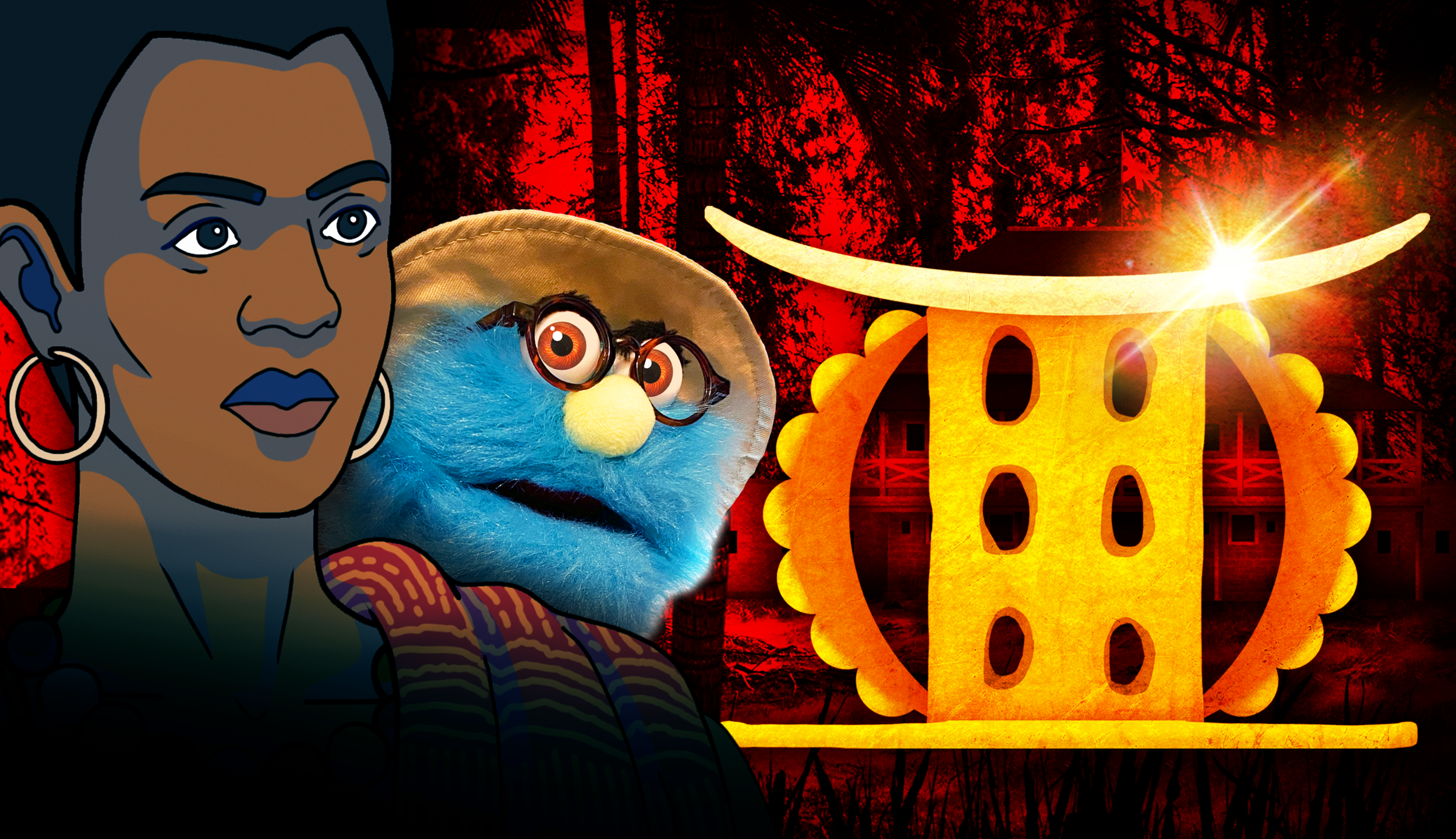
lesson 10 - The War of the Golden Stool
So this week’s episode was kind of complicated, right? Kate and Ryan had a hard time following — I’ve never seen so many missed questions. Partly this is because absolutely none of it is taught in American schools, including where the fuck the Seychelles are (I’m proud to say I knew that one, although I did not know about their tortoises, which seem to give Galapagos a run for their money). The wildest part is, this story didn’t even take place that long ago! Yaa Asantewaa passed away 100 years ago this year.
Let’s rewind a bit, though. I want to clarify something important, but tricky: whether Asante or Ashanti is the accurate name for this Twi-speaking, matrilineal people. Technically, Ashanti is the Anglicized version of the Asante (you’ll notice “Asante” in Yaa Asantewaa’s name), but Ashanti still seems to be in fairly common usage among academics, in addition to being used in ye olde quotes. I will be using “Asante” here. Their empire was unified in the late 1600s, away from the coast, in the inner, forested area of what’s now Ghana.
European powers were already present in the region, especially on the coast, which was called the Gold Coast after the primary reason behind Europe’s interest in the area. First came the Portuguese, then the Dutch; and then, finally, the British. But gold wasn’t the only thing Europe harvested from the region: it was also the area where many slaves sent to the Americas came from. Spain took the first slaves from West Africa in the early 1500s, and Portugal began the slave trade in earnest soon after. Their interests were taken over by the Dutch in the early 1600s, and the British finally became the major European power in the area in the latter half of the century. When the British Empire finally abolished slavery in 1807, the system had been in place for hundreds of years.
On the African end, the slave trade was not a straightforward thing. Many native nations actively participated in the trade, selling prisoners of war to the Dutch and British, and this became a large source of wealth for many. Such was the case for the Asante, who began participating in the early 1700s.
Even after their outlawing of slavery, the British still had extremely profitable economic interests in the region, and remained motivated to protect those interests. Their goals in the mid to late 1800s were to eliminate the slave trade (good!) and expand their control in the region (bad). Nominally, they wanted peace in the region to preserve their trade interests (trade tends to get disrupted during wars), but I guess centuries of imperialism are hard to shake because their actions totally did not reflect that. See: British commander Sir Garnet Wolsely going against his orders and burning down the Asante capital city of Kumasi in 1874. That totally destabilized the Asante nation, which the British had said they did not want to do. (This fight had been over custody of the former Dutch fort Elmina, on the coast.)
In regards to the British wanting to outlaw slavery among the Asante — of course, morally, slavery = bad, 100% of the time. But this was a major source of income for the region, and had been for hundreds of years. It hardly seems fair for the British, as outsiders who’d participated in making this a huge industry, to turn around and try to pull the rug out from under a major pillar of the natives’ economy. It hadn’t been a straightforward thing for the British to disentangle their economy and empire from the slave trade; it seems presumptuous that that’s what they expected of the Asante. Of course, it’s an extremely good thing that slavery was outlawed, and it would’ve been even better if it hadn’t been introduced in the first place. But this is what I mean when I say it wasn’t a straightforward thing! History is complicated, folks!
Now, let’s turn to stools. The Professor did an incredible job explaining the stool system, and especially the importance of the Golden Stool to the Asante society. Something I found interesting about the position of Asantehene is that their power was less absolute than a traditional monarchy. The other stool holders could unseat an Asantehene if they determined he was no longer fit for the job. A fun detail: the enstoolment ceremony (in which the stool holder received the sunsum of the stool) involved the prospective ruler being lowered and raised three times over the stool, of course without actually touching it. The monarchist-ass British would get obsessed with this throne-like image and totally not understand that people don’t actually sit on it.
The queenmother was a role second in importance only to the Asantehene. And that wasn’t a typo — queenmother is one word like that, in this instance. This is the role that was held by Yaa Asantewaa before the Asantehene was taken to the Seychelles by the British. As I mentioned, the Asante were a matrilineal society, and the role of queenmother shows this. One of her most important duties was picking the next Asantehene. While the current Asantehene could nominate who he wanted to be his successor, ultimately this was just a suggestion that the queenmother (or Asantehemaa) would incorporate into her decision. Otherwise, she could choose another male candidate from the royal bloodline.
This system mostly worked well for the Asante, except for when it didn’t. When a queenmother named Yaa Akyiaa nominated her own son as Asantehene, several stool holders on the council objected. This launched the Asante nation into a turbulent, civil war-filled period, which lasted on and off from 1867 to 1894. Right in prime vulnerable-to-the-British time! Agyeman Prempeh was finally enstooled in 1894, only to be sent off to the Seychelles a few years later.
And here we arrive at our absolute girl, Yaa Asantewaa. As if she didn’t have enough incredible quotes highlighted in the episode, sources report that her motto was “men are not pillows for any woman to lean against.” She became queenmother in 1877, named to the role by her brother, who was at the time chief of Edweso (a region in Asante nation and its own stool). She was known to be a fair, generous leader, and unsurprisingly a great champion of women — she especially clamped down on crimes against women such as rape and domestic abuse. Her grandson, who she’d nominated to succeed her brother as the chief of Edweso, was sent to the Seychelles in 1896 alongside Asantehene Agyeman Prempeh. Although Kumasi was traditionally the capital of Asante nation, it was under British occupation by the time of the Yaa Asantewaa war (The Professor shared details on how the Asante blockaded them in), so Yaa Asantewaa led from her hometown of Edweso.
In the episode, Ryan asked about the British search for the Golden Stool: “Was it hidden?” The answer? Yes. And history still doesn’t know where it was hidden during that time. Probably a smart strategy — if you can keep something successfully hidden from the British empire, you might want to hold onto that hiding place in case the time ever comes that you need to hide it again. Clearly, it was a good hiding place!
And while it sucks that the Asante lost the war and were brought into the British Protectorate, and tragic that Yaa Asantewaa died in exile from her country and her people, it rules that she fucking pulled one over arguably the biggest empire in history and accomplished a big part of what she set out to do. In protecting the Golden Stool, she protected the identity of her people, and ensured that the Asante, the Asantehene, and the Golden Stool exist to this day.
To finish us off on another hopeful note, I’d like to share this quote from the Gold Coast Leader newspaper from December 27, 1924, detailing Agyeman Prempeh’s return to Ghana from the Seychelles after nearly 30 years:
"Thousands of people, white and black, flocked down to the beach to welcome him. They were sorely disappointed when the news flashed through that Nana Prempeh was not to be seen by anyone, and that he was to land at 5:30 pm and proceed straight away to Kumasi by a special train. Twenty minutes after the arrival of the train, a beautiful car brought Nana Prempeh into the midst of the assembly. It was difficult for us to realise even yet that he had arrived. A charming aristocratic-looking person in a black long suit with a fashionable black hat held up his hand to the cheers of the crowd. That noble figure was Nana Prempeh."




